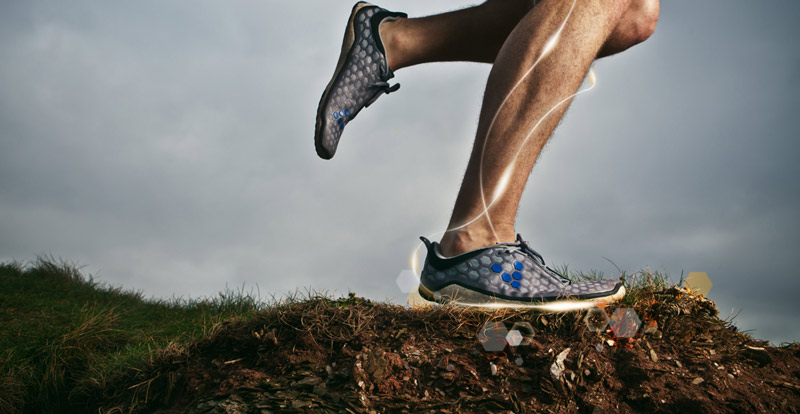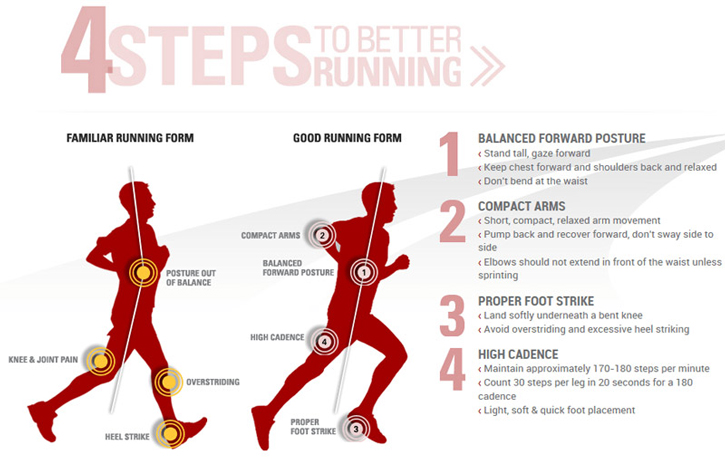NAFC NewsBlast - June 2017 | Ed 2
Paleo Running | Run the way nature intended
By Joe Navas | OutToLaunch.me
 Photo Courtesy of: Natural Running Coach
Photo Courtesy of: Natural Running Coach
Paleo (Natural) Running vs. Heel/Toe
| Part 1 of 3
Ahh, ..the joy of running. Other than walking, the simplest form of exercise, …anyone can do it. All you need is a pair of running shoes (usually expensive), heart rate monitor, special sweat wicking breathable running shorts with matching top, sun visor, sunglasses, blinking “don’t run over me” reflective gear, sun screen, rain gear, music, headphones, music device, and you are ready for anything, …EXCEPT maybe running.
As an avid runner, athlete, and former personal trainer, I can say without hesitation, “running” is the single-most-abused-form (or lack thereof) of exercise there is. Period. The ability to break from a walk into a “run” pace/cadence, doesn't necessarily mean you know “how” to run. In this 3 part series we will cover why technique is so critical and if you choose to, how to safely transition to run the way nature intended.
Running Style for the purpose of this article refers to your individual style. Heavy vs. light foot, breathing, posture, arms, shoulders, etc. We will address this later in detail.
Depending on your running technique and style (see below) you can exert 3x to 7x your body weight directly on your running extremities (legs, knees, ankles, etc.), with residual forces reverberating through your entire body, on each and every foot plant. Think about that for a moment, do the math, …let that sink in. In one running session you could subject your body to 10’s of thousands of pounds of force repeatedly for the duration of your run. The fact that a body has the capacity to handle those forces and not just survive, but thrive, is truly astonishing.
Importance of Running Technique - Work with the body, not against it.
Let’s establish the basics. Whether you run for health, or competition, the technical rules are much the same. You want to apply the technique that is going to be easiest on your joints, muscles, connective tissue, prevent injury and provide you the best method to run faster, with less effort. This should give you both a competitive advantage, and increase longevity. Sounds easy enough, let’s go run! …no, not yet. Now pay attention, this is important.
The vertical GRF (ground reaction force) exerted on a runner that is moving forward is much less than one running in place. Setting a pace that takes advantage of your bodies design, minimizing the higher more damaging vertical GRF impact forces is critical to avoiding injuries.
Heel Toe vs. Natural (Paleo or mid foot) Running
Running heel/toe, you extend the leg/foot in front of your body, and strike the ground with your heel first, rolling forward and pushing off the mid foot on each stride. This locks out the natural suspension that creates shock absorption via the flexion of the foots arches, ankle, knee, hip and spine.This is in direct contrast to a mid foot runner that lands on the mid foot and heel almost simultaneously, planting the strike directly under the torso. Although the GRF is the same, the impact is spread over the springiness of the arch of the foot and the Achilles tendon/calf muscle complex to cushion the blow.
 Copyright: Jose Miguel Del Castillo Graphic
Copyright: Jose Miguel Del Castillo Graphic
Let’s examine both styles in more detail.
Heel/Toe: The extension of the leg in front of the body prior to heel strike creates an angle where the extended leg will take the force of 3x - 7x your weight, beginning at the heel then transferring GRF’s directly up the entire skeletal structure with little to no padding, except that provided by your heel and the running shoe. All that force is transferred in succession from heel strike to ankle joint, knee joint, hip joint, finishing up the spine. Imagine hitting the wall with your bare fist, then hit the wall with your fist in a boxing glove. The cushion in the glove slows the impact and distributes the force over a longer period of time. Consequently, it wouldn't hurt as much, and likely prevent damage to the bones in your hand (and the wall). So if you are running heel/toe, padding the heel makes sense. Imagine running heel/toe barefoot on concrete. Ouch!
Running shoes designed over the past 40 years for Heel/Toe running added heel padding using sophisticated space age tech and materials to absorb impact forces and attempt to reduce injuries. Unfortunately in spite of all this great technology the percentage of injuries has remained about the same. Why? Because your body is not really designed to run heel/toe. It’s like taking your "Smart Car" four wheeling, …no one says you can’t do it, ….it’s just not, …well, very Smart. (proof you can find a picture of anything on the internet)

Next Week: Part 2 of 3 | Paleo (natural) Running
Credits and References
Pics and Tips:

